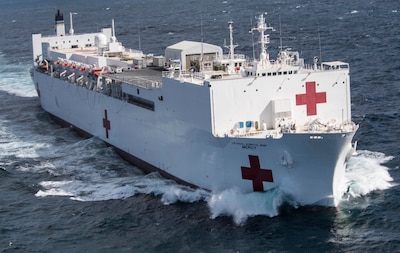By Army Staff Sgt. Joseph Vonnida, Colorado National Guard
CENTENNIAL, Colo., Feb. 26, 2018 — Every state has a
National Guard, and it’s not surprising that a state such as Colorado -- known
for snowy mountaintops and a thriving ski industry -- would have a biathlon
team. When you put the two together, you get a diverse and unique group of
individuals who do whatever it takes to compete.
According to National Guard Regulation 350-10, which covers
the National Guard Biathlon Training Program, biathlon skills have played an
important role in winter warfare and military defense since the Great
Scandinavian War in the early 1700s.
The military continues to value the combination of skiing
and marksmanship skills.
The first World Biathlon Championships were held in 1958 and
included a representative team of military personnel from Camp Hale, Colorado.
Two years later, the Winter Olympic Games introduced the modern form of the
sport.
From 1958 to 1973, Fort Richardson, Alaska, was home to a
biathlon training center for military athletes. In 1973, the military biathlon
program transferred to the Vermont National Guard.
National Guard biathlon has a long history of supporting and
developing biathlon athletes who, in turn, enter the World Class Athlete
Program and compete in World Cup and Olympic biathlon events.
Training
As of March 2017, the Colorado National Guard Biathlon Team
had 11 competitors: six officers, two warrant officers and three
noncommissioned officers, including one from the Colorado Air National Guard.
“A first for this team in a long while,” Colorado Army
National Guard 1st Lt. Bailey Bullock said about having an Air National
Guardsman on the team.
Bullock was a newcomer to the team at his race in February
2017 at Snow Mountain Ranch in Granby, Colorado, where the team trains and
competes.
“We like to train as a team whenever possible, but this year
our schedules have been really demanding,” he said. “This year, our training
has occurred just prior to the event either individual or in small groups.”
Bullock said that team training has been done in the past
and that it’s a goal for next season.
Team members train on Nordic ski areas around Colorado in
Frisco, Snow Mountain Ranch and Eldora. Training opportunities include
competitions and other events.
“It’s important to get the knowledge and experience of those
who have been doing the sport for a while, and it’s a good motivator having the
support,” Bullock said.
Army Capt. Robert Killian placed fourth overall at the 2017
regional competition. The Colorado Army National Guard finished third as a
team.
Army Lt. Col. Marc Reyher invited Bullock to join the team.
“Since we work in the same office, he talked about it a lot,
and I wanted to try it,” Bullock said. “I get to ski and shoot -- two things
that are a lot of fun. How can that possibly be bad?”
Biathlon Builds Army Skills
The National Guard issues the team’s equipment, as well as
the rifle and the uniform.The only things team members must provide are gloves
and boots.
Biathlon, as history represents, has a lot of similarities
with Army training and culture.
“Generally speaking the physical aspect, having to stay in
shape, and the shooting are directly related to my Army skills,” Bullock said.
“While the style of shooting is different -- prone or standing while wearing
skis -- breathing, trigger squeeze, sight picture, and position all apply.”
Bullock has practiced downhill skiing for a number of years
but says biathlon is so much different.
“The first day, I took a class and it made me realize that I
had to amend my workout plan to include more cardio and more leg work,” Bullock
said. “After that first day, I was really sore.”
“Also, when skiing hard, breathing is increased, and
shooting is more difficult. As you come into the range you have to slow your
breathing while your heart is pounding,” Bullock said. “This is what separates
those who are really good from the novices.”
Season Ends, Training Continues
The Colorado National Guard finished the season in January
at the National Guard Western Regional Competition in Jericho, Vermont.
The men’s team finished third overall, while newcomer Army
Sgt. Lisl Pearson took first in both the women’s 7.5-kilometer novice sprint
and 7.5-kilometer novice pursuit events. Army Chief Warrant Officer 2 Niall
MacGregor placed third in the men’s 12.5-kilometer senior pursuit.
“I had no idea I had finished so far ahead of everyone in my
class until my coaches told me,” Pearson said. “I had a few hiccups, like
dropping a pole and crashing during a penalty lap, but I used those setbacks to
push harder and faster.”
“The team comradery definitely gave me a winning edge,” she
said. “It’s an amazing sport, and I love it.”
Now that the season is over, and the snow will make way for
summer, biathletes will find other ways to maintain their skills.
“In the off-season, we will train with roller skate skis.
It’s the same motion we use on the snow, but you must pick your training area
carefully because they don’t have a breaking mechanism,” Bullock said. “Time to
focus on the future.”








